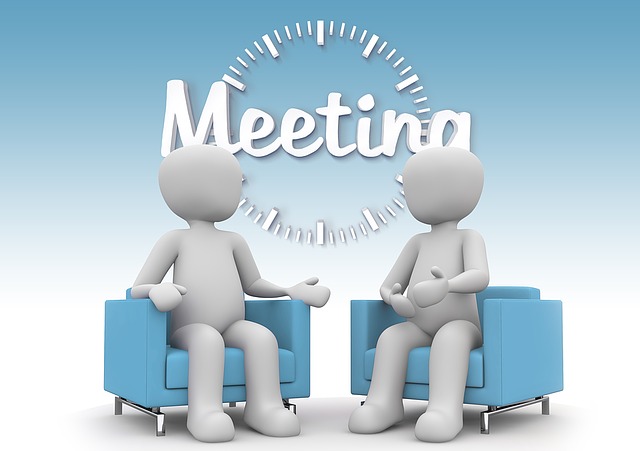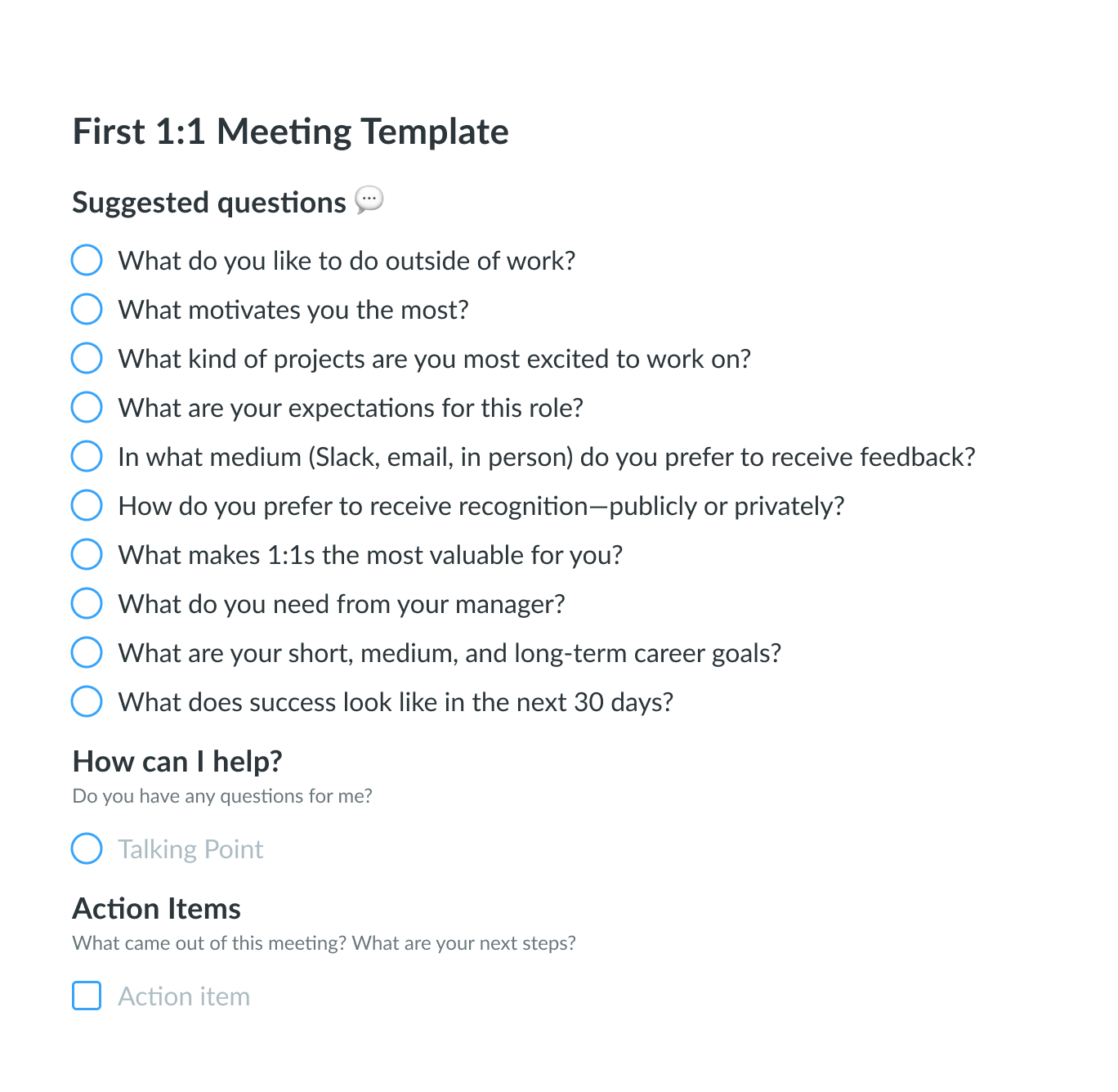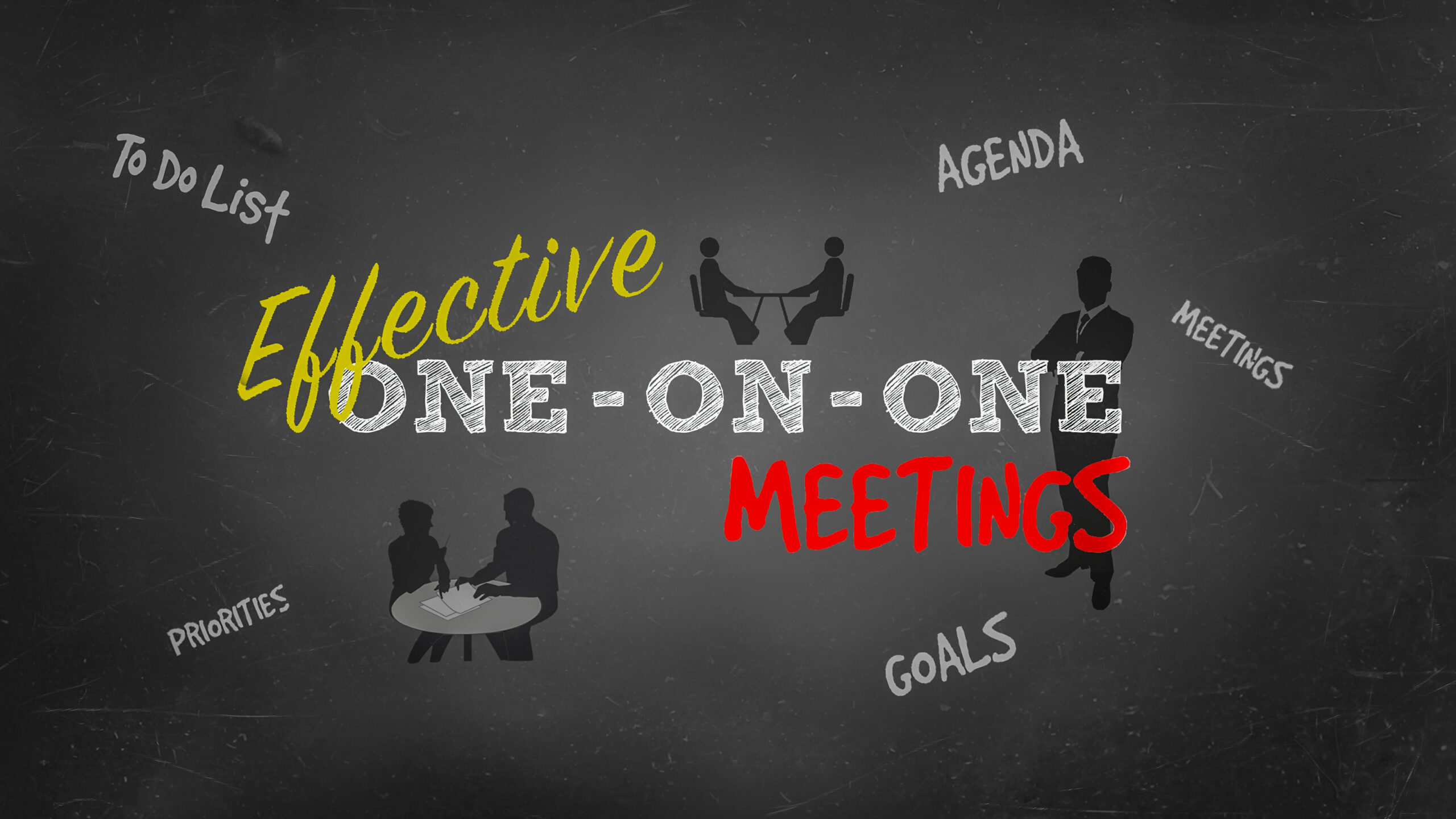First One On One Meeting With Employee

The midday sun streamed through the office window, illuminating dust motes dancing in the air as Sarah adjusted her chair. Across the small table sat David, a new recruit with a blend of anticipation and nervousness etched on his face. This wasn't just another introductory chat; it was the crucial first one-on-one meeting, a cornerstone of building a strong, productive working relationship.
This initial meeting serves as a vital foundation for employee success, laying the groundwork for open communication, trust, and a shared understanding of expectations and goals. A well-executed first one-on-one sets the stage for ongoing growth and development, directly impacting employee engagement and retention.
Building a Foundation of Trust
Sarah, a seasoned project manager with a reputation for nurturing talent, understood the gravity of this moment. She recalled her own early days, the anxieties of joining a new team, and the profound impact a supportive manager could have. Her approach was simple: listen first, guide second.
“I always start by trying to understand their perspective,” Sarah explained. “What are their aspirations? What are their concerns? What do they hope to achieve here?” This open-ended approach allows new employees to feel heard and valued from the outset.
Significance of the First Impression
The first one-on-one meeting is often the first opportunity for a new employee to truly connect with their manager on a personal level. It's a chance to move beyond formal introductions and delve into individual strengths, weaknesses, and preferred working styles.
According to a recent Gallup poll, employees who feel their manager is invested in their development are significantly more engaged and productive. This initial meeting is the perfect opportunity to demonstrate that investment.
Practical Steps for a Successful Meeting
Sarah began the meeting by sharing her own career journey, highlighting both successes and failures. This vulnerability created a safe space for David to open up about his past experiences and his aspirations for this new role.
She then moved on to discussing David's initial training and onboarding experience, seeking his feedback on areas for improvement. She asked pointed questions about his understanding of the team's goals and how he felt his skills could best contribute.
“It’s crucial to establish clear expectations,” Sarah emphasized. “But equally important is to create a dialogue, not a monologue. I want to know what challenges they anticipate and how I can support them in overcoming those challenges.”
Addressing Concerns and Providing Clarity
One of the most significant aspects of the first one-on-one is addressing any initial concerns or uncertainties the employee may have. This could involve clarifying job responsibilities, explaining company policies, or providing introductions to key team members.
David expressed some uncertainty about the project's timeline. Sarah patiently walked him through the project roadmap, breaking down complex tasks into smaller, more manageable steps. This provided him with a sense of clarity and control, alleviating his initial anxiety.
Setting the Stage for Ongoing Growth
The conversation then shifted towards professional development. Sarah inquired about David's long-term career goals and discussed opportunities for him to expand his skill set within the company. She highlighted upcoming training programs and mentorship opportunities that could help him achieve his aspirations.
This forward-thinking approach demonstrates a commitment to the employee's growth and fosters a sense of loyalty. It also reinforces the message that the company values its employees and is invested in their future.
As the meeting drew to a close, Sarah reiterated her open-door policy and encouraged David to reach out with any questions or concerns. She scheduled a follow-up meeting for the following week to review his progress and provide ongoing support.
“Remember,” Sarah said with a smile, “I’m here to help you succeed. Your success is our success.”
The Ripple Effect of Positive Interactions
The impact of that first one-on-one extended far beyond the confines of the meeting room. David left feeling empowered, supported, and confident in his ability to contribute to the team.
This positive experience fostered a strong sense of connection and belonging, laying the foundation for a long and productive working relationship. The investment of time and effort in that initial meeting yielded significant returns in terms of employee engagement, productivity, and retention.
In the grand tapestry of workplace dynamics, that first one-on-one meeting is a single thread, yet it is one that has the power to strengthen the entire fabric. It's a reminder that the most valuable asset of any organization is its people, and that investing in their growth and well-being is the key to long-term success. *Building a strong relationship with new employees from the very beginning is critical.* Communication, understanding and support are the main building blocks to achieve that.








![First One On One Meeting With Employee 🏅9 Best Employee One-on-One Meeting Templates [2024]](https://snacknation.com/wp-content/uploads/2023/12/employee-one-on-one-meeting-templates-768x614.png)


![First One On One Meeting With Employee [Template] First One-on-One Meeting with a New Employee | Fellow.app](https://fellow.app/wp-content/uploads/2022/05/First-One-on-One-Meeting-Questions.png)






